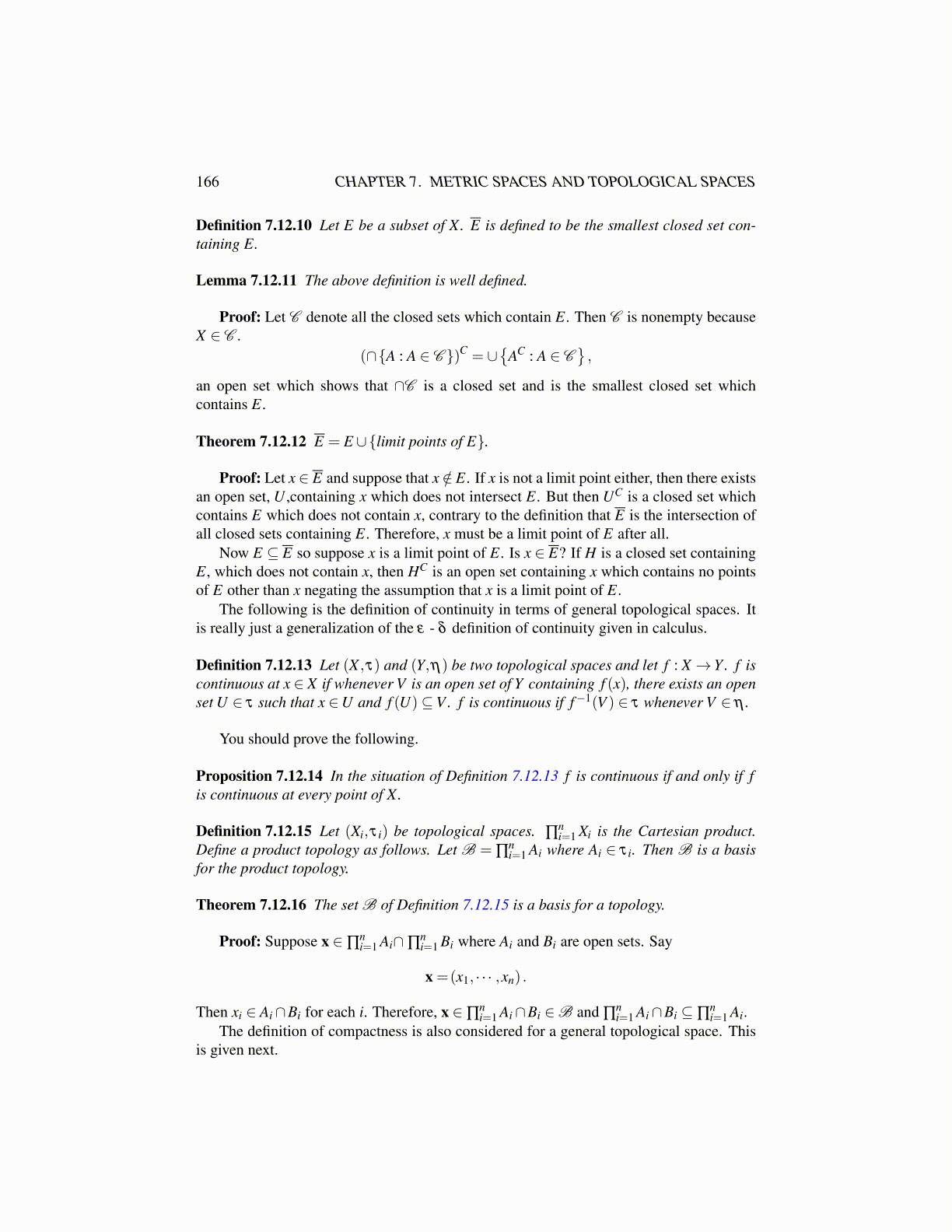
166 CHAPTER 7. METRIC SPACES AND TOPOLOGICAL SPACES
Definition 7.12.10 Let E be a subset of X. E is defined to be the smallest closed set con-taining E.
Lemma 7.12.11 The above definition is well defined.
Proof: Let C denote all the closed sets which contain E. Then C is nonempty becauseX ∈ C .
(∩{A : A ∈ C })C = ∪{
AC : A ∈ C},
an open set which shows that ∩C is a closed set and is the smallest closed set whichcontains E.
Theorem 7.12.12 E = E ∪{limit points of E}.
Proof: Let x∈ E and suppose that x /∈ E. If x is not a limit point either, then there existsan open set, U ,containing x which does not intersect E. But then UC is a closed set whichcontains E which does not contain x, contrary to the definition that E is the intersection ofall closed sets containing E. Therefore, x must be a limit point of E after all.
Now E ⊆ E so suppose x is a limit point of E. Is x ∈ E? If H is a closed set containingE, which does not contain x, then HC is an open set containing x which contains no pointsof E other than x negating the assumption that x is a limit point of E.
The following is the definition of continuity in terms of general topological spaces. Itis really just a generalization of the ε - δ definition of continuity given in calculus.
Definition 7.12.13 Let (X ,τ) and (Y,η) be two topological spaces and let f : X →Y . f iscontinuous at x ∈ X if whenever V is an open set of Y containing f (x), there exists an openset U ∈ τ such that x ∈U and f (U)⊆V . f is continuous if f−1(V ) ∈ τ whenever V ∈ η .
You should prove the following.
Proposition 7.12.14 In the situation of Definition 7.12.13 f is continuous if and only if fis continuous at every point of X.
Definition 7.12.15 Let (Xi,τ i) be topological spaces. ∏ni=1 Xi is the Cartesian product.
Define a product topology as follows. Let B = ∏ni=1 Ai where Ai ∈ τ i. Then B is a basis
for the product topology.
Theorem 7.12.16 The set B of Definition 7.12.15 is a basis for a topology.
Proof: Suppose x ∈ ∏ni=1 Ai∩ ∏
ni=1 Bi where Ai and Bi are open sets. Say
x =(x1, · · · ,xn) .
Then xi ∈ Ai∩Bi for each i. Therefore, x ∈ ∏ni=1 Ai∩Bi ∈B and ∏
ni=1 Ai∩Bi ⊆ ∏
ni=1 Ai.
The definition of compactness is also considered for a general topological space. Thisis given next.